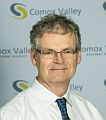LOCAL GOVERNMENT POLICY IMPACTS RIPPLE THROUGH TIME: “The growing cost of neglect, combined with the urgency of the flood liability issue in particular, is the driver for linking municipal infrastructure asset management and stream health as cause-and-effect,” wrote Kim Stephens, Partnership for Water Sustainability, in an essay written for new politicians after the 2022 local government elections in British Columbia

“My over-arching message to those elected in October 2022 is succinct: Get the water part right in a changing climate, and you will be amazed how other parts of the community resiliency puzzle then fall into place. A supporting message is this: Our land ethic has consequences for water. This means elected representatives need to understand why development practices disconnect the water balance pathways that power stream-ecology. They also need to understand why a water-first approach to green infrastructure can reconnect the two,” stated Kim Stephens.
ARTICLE: “Local Governments invest in youth at Vancouver Island University – a conversation with Graham Sakaki, Regional Research Institute Manager” (Asset Management BC Newsletter, Summer 2023)

“The story behind the story is about the importance of embedding knowledge of EAP into the youth who are going to be the future of our local governments. The framework that we have set up ensures this will happen. Vancouver Island University, as a smaller university, is very focused on applied research and community engagement. This is a good fit for the EAP mission. There are lots of partnerships that exist for selfish reasons. But the EAP Partnership is selfless, and from all angles. It is a leap of faith for member local governments. Commitment to passing the baton is unwavering,” stated Graham Sakaki.
ARTICLE: “Our reflections on sharing a mission with Wally Wells” – by Paul Chapman and Kim Stephens (Asset Management BC Newsletter, Summer 2023)

“Our discussions lead to an expanded common vocabulary. Sustainable Service Delivery, Eco-Assets and Eco-Asset Management, the Ecological Accounting Process, Municipal Natural Asset Inventory, Riparian Deficit, and watershed stewardship are some of the words in our new common tongue. The rabid environmentalist, the cold-hearted accountant and the aloof engineer could come together and focus on a common goal – Water Balance. At a very key level, it is about our relationship with water and with each other. We design and build our communities based on our relationship to water,” stated Paul Chapman.
STORIES OF INTER-REGIONAL COLLABORATION: “Stream Systems and Watershed Stewardship in the Comox Valley: Moving Towards Sustainable Service Delivery” — 2nd in the series of stories behind the stories released by the Partnership for Water Sustainability in May 2023

“When people are engaged, they are interested in the oral history of the place. How people in the community are engaged is the education piece. The more they engage, the more they can be part of the solution because they understand the restrictions that we operate under as local government. It becomes quite a collaborative upbringing you could say. For the Village of Cumberland, it is really important as a smaller municipality to partner with other Comox Valley local governments and with local community groups,” stated Michelle Mason.
DOWNLOAD A COPY OF: “Living Water Smart in British Columbia: Moving Towards Sustainable Service Delivery in the Comox Valley” – released by the Partnership for Water Sustainability in May 2023

“I am a project person. I come from a project background and am used to the stages of a project – from conception through budgeting, procurement, construction, and commissioning. It is a very structured spectrum of activities. There is a defined beginning and end. But that is not the way it is in the world of water stewardship. It is a bit like a creek. It just meanders all over the place such that you just cannot seem to get things to completion even when the process is a good one. You learn that this is what it means to be on a journey,” stated Marc Rutten.
DOWNLOAD A COPY OF: “Living Water Smart in British Columbia: What organization serves only rural local governments, community leaders and First Nations?” – released by the Partnership for Water Sustainability in May 2023

“I prepared a report that reflected what I learned from my travelling roadshow in 2021. The report lists 18 issues of concern to rural and remote communities. The board said this is great. Now, as Executive Director, what could you do to solve these 18 problems? I was gob smacked. We had a strategic planning session in June 2022 to decide what the BC Rural Centre could realistically accomplish as an advocacy organization for rural constituencies. This is the genesis for holding the Keeping It Rural Conference a year later in early June 2023,” stated Barry Janyk.
RURAL CONSTITUENCIES WANT A VOICE: “Zoom towns made possible by high-speed internet in rural communities have allowed vast numbers of people to vacate their city condo for a family home in a rural setting,” stated Barry Janyk, Executive Director of the BC Rural Centre

“For the past decade rural communities had been devising clever population attraction strategies and finding occasional success in achieving incremental growth. Coincidental with the expansion of broadband communications, the global COVID pandemic and the predicted demographic upheaval, living in urban areas became less attractive. Many folks who had been considering leaving urban centres quickly did. We characterize the three main groups moving to the really small communities as digital nomads, amenity migrants, and retirees,” stated Barry Janyk.
DOWNLOAD A COPY OF: “Living Water Smart in British Columbia: Trust is the currency of collaboration in the Comox Valley” – released by the Partnership for Water Sustainability in May 2023

“The thing too about the speed of trust in our community is the stewardship sector and its strength. It has always been strong. And that has long been part of the messaging out of the Comox Valley. Trust is so critical in forming relationships with interested parties such as the stewardship sector. After the years of understanding each other’s perspectives, we can have a conversation about solutions. I can ask them questions because they have ears to ground, and they can ask me about and give input to regulatory changes,” stated Nancy Gothhard.
DOWNLOAD A COPY OF: “Living Water Smart in British Columbia: Healthy Waters Program for salmon, whales, and people” – released by the Partnership for Water Sustainability in May 2023

“The new Healthy Waters program will support sampling and analysis for a variety of contaminants of concern at up to 12 flagship BC watersheds. We will engage, share and train Indigenous community members, conservation teams and local authorities, thereby leveraging capacity in support of water quality monitoring and stewardship. The program aims to monitor water quality, effectively documenting water contaminants from the mountains to the sea,” stated Dr. Peter Ross.
DOWNLOAD A COPY OF: “Living Water Smart in British Columbia: Erik Karlsen and the Streamside Protection Regulation” – released by the Partnership for Water Sustainability in May 2023

During the period 1996 through 2001, the BC government tasked Erik Karlsen with the lead role in developing the wording of an Order in Council to enact Section 12 of the Fish Protection Act. It was a unique position, as this legislation was a Ministry of Environment initiative, but led by Erik, who was the Director of Regional Growth Strategies in the Ministry of Municipal Affairs. Over a period of two years, Erik Karlsen chaired a committee of experts in a process that focused on the science, the policies, the costs, the benefits with a goal of gaining consensus from all sectors.

